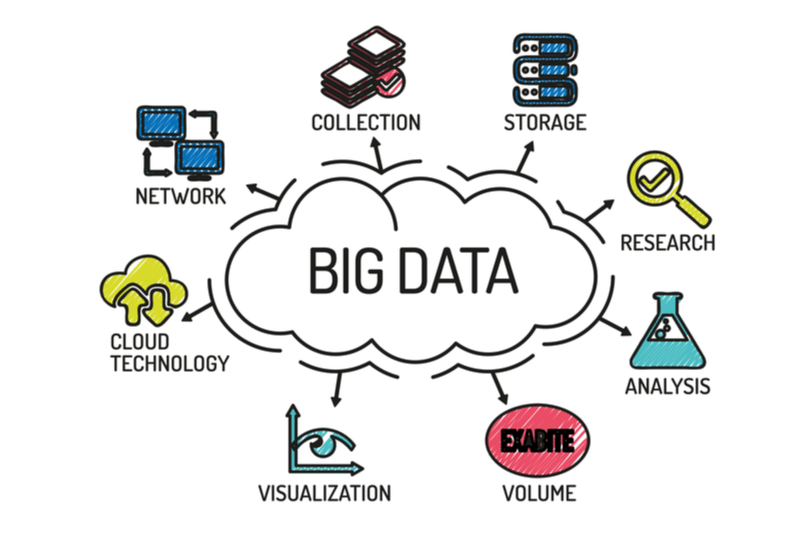📊 Big Data Demystified: The Fuel of the Digital Era 🚀
📊 Big Data Demystified: The Fuel of the Digital Era 🚀
In today’s hyper-connected world, data is being generated at an unprecedented rate. From every click, swipe, search, and stream — we’re creating data footprints every second! But how do companies like Google, Netflix, or Amazon make sense of this ocean of data?

Welcome to the world of Big Data — where size, speed, and insight collide! 🌐
🧠 What is Big Data?
Big Data refers to extremely large datasets that traditional data processing software can’t manage efficiently. But it’s not just about size — it’s also about how fast it’s created, how varied it is, and how valuable insights are extracted from it.
🧩 The 5 V’s of Big Data:
- Volume — Massive amounts of data (terabytes to petabytes).
- Velocity — Speed of data generation (real-time or near-real-time).
- Variety — Different types of data (structured, unstructured, semi-structured).
- Veracity — Reliability or quality of the data.
- Value — The actionable insights hidden in the data.
📌 Example: A social media platform processes billions of posts, comments, images, and reactions every day.
🛠️ Big Data Technologies & Tools
1. Hadoop 🐘
- What: An open-source framework that stores and processes large datasets across clusters of computers.
- Core components: HDFS (storage), MapReduce (processing)
- Example: A retail company uses Hadoop to analyze customer purchase behavior across thousands of stores.
2. Apache Spark ⚡
- What: A lightning-fast engine for big data processing.
- Why it’s cool: In-memory processing makes it 100x faster than Hadoop’s MapReduce.
- Use case: Fraud detection in banking systems.
3. Kafka 📡
- What: A distributed event streaming platform.
- Used for: Real-time data feeds (e.g., stock market, ride-sharing apps).
- Example: Uber uses Kafka to process millions of trip events per day.
4. NoSQL Databases 🗃️
- Types: MongoDB, Cassandra, Couchbase
- Why NoSQL?: They handle unstructured data better than traditional SQL.
- Example: Netflix uses Cassandra to store and retrieve user preferences instantly.
5. Data Lakes vs Data Warehouses
- Data Lake: Raw, unprocessed data (flexible, cheaper storage).
- Data Warehouse: Processed, structured data for analytics (optimized for querying).
- Example: Amazon S3 (Data Lake), Amazon Redshift (Data Warehouse)
🧪 Big Data Theories & Concepts
1. MapReduce 🗺️ ➕ ➖
A programming model for processing big data in parallel. Data is split, mapped, processed, and reduced to produce meaningful output.
🧠 Think of it as: Divide & conquer!
2. Stream Processing vs Batch Processing 💧📦
- Stream: Real-time data (e.g., processing sensor data on the fly).
- Batch: Large chunks of data at intervals (e.g., daily sales reports).
3. Machine Learning with Big Data 🤖
Large datasets power better ML models. Example:
- Spotify uses big data + ML to recommend your next favorite song 🎶.
🔍 Real-World Applications of Big Data

💼 Big Data Career Paths
- Data Engineer — Build data pipelines & infrastructure.
- Data Scientist — Analyze and interpret complex data.
- Big Data Architect — Design big data solutions.
- Business Analyst — Convert data into business strategies.
💡 Pro Tip: Learn tools like Spark, SQL, Python, Kafka, and Hadoop to stand out.
⚙️ Common Challenges in Big Data
- 🧹 Data Cleaning — Most of the time goes into cleaning and preprocessing.
- 🔐 Data Security & Privacy — Especially for sensitive data (e.g., healthcare).
- 💾 Storage & Scalability — Need for cloud or distributed storage solutions.
💥 Final Thoughts
Big Data is not just a trend — it’s the backbone of the digital age! 🌐 From personalized ads to traffic predictions and smart assistants, Big Data powers it all.
🎯 Start small but think big — even learning basic data handling can open doors to powerful insights and career growth.
“Without data, you’re just another person with an opinion.” — W. Edwards Deming
Comments
Post a Comment